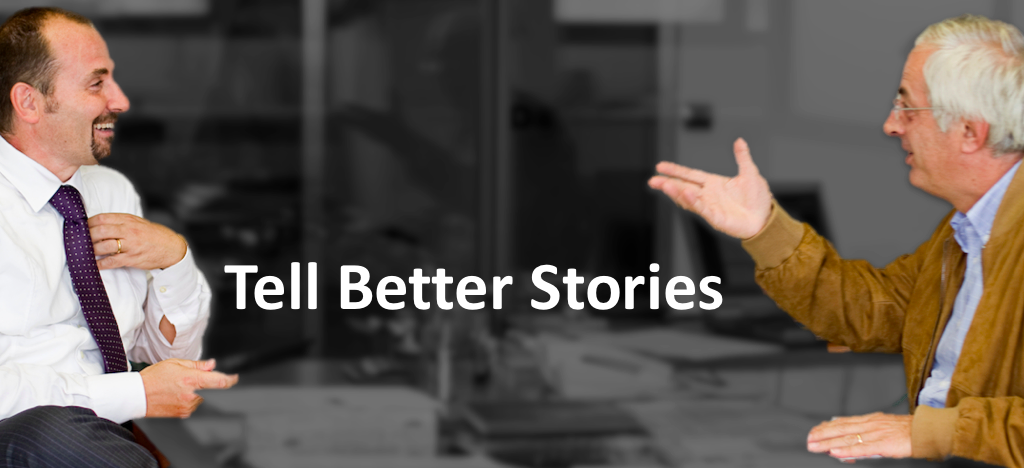Ever feel underappreciated by your prospects or customers? Do they see you as a commodity? I have certainly felt it - and understand why. Not because I offered a very basic commodity solution - but because most B2B buyers are inundated with solutions and are all too happy to view your or my solution in the simplest, least differentiated terms. It makes life easier. It also makes differentiating and selling value pretty hard. If you struggle with this, I invite you to join the journey of this series on sales and storytelling. You'll discover how to find, learn, and tell stories that give you confidence and differentiate you and your solution so you can sell more, faster and at higher margins.
2806% margin - a story about stories

2806% margin. That is what stories can be worth to even the most mundane meaningless products. The 2009 research project called Significant Objects proved just that. In that project, researchers purchased 100 trivial objects from garage sales - salt shakers, butter dishes, paperweights, etc. At an average of $1.28 per object, they spent a total of $128.74. Researchers then gave each item to a writer and asked them to create a brief story about it. The writers were instructed to not make up crazy false claims like the object once belonged to the queen of England - just provide stories that gave the object some context and uniqueness. Items along with their stories were then offered for sale online. $128 of mundane objects were sold over $3200! That is 2806% margin. Everything - from products to people to even love - is mundane to the outside world until it is rendered unique and compelling by some story that connects with the audience. This is exaggerated in an information overloaded. To break out it is our job as salespeople and believers to help our audience see, feel and really need the uniqueness of our offerings. Stories are the #1 way to do that.
People don't want more information. They are up to their eyeballs in information. They want faith – faith in you, your goals, your success, in the story you tell. It is faith that moves mountains, not facts. Faith needs a story to sustain it - a meaningful story that inspires belief in you and renews hope that your ideas, do indeed, offer what you promise.- Annette Simmons, The Story Factor
In this blog series
 In this series, we will look at new and effective ways to leverage the stories of your company, product, and people. I will share my experiences as well as thoughts and research from Daniel Pink, Annette Simmons, Ira Glass, Ron Howard, Robert McKee, Jonathan Gottschall, and more. As a leader, you will not only learn how to differentiate and sell with stories, but will find new ways to capture, share, and teach your stories so that salespeople believe and retell them well.
In this series, we will look at new and effective ways to leverage the stories of your company, product, and people. I will share my experiences as well as thoughts and research from Daniel Pink, Annette Simmons, Ira Glass, Ron Howard, Robert McKee, Jonathan Gottschall, and more. As a leader, you will not only learn how to differentiate and sell with stories, but will find new ways to capture, share, and teach your stories so that salespeople believe and retell them well.
Outline for the series:
- Why. Inspired by Simon Sinek's spectacular TedTalk, we start with why storytelling works for salespeople, prospects all acts of learning and persuasion. Short answer - because they work and help you win - fast.
- What we mean by storytelling. For this series, we focus on telling stories in live customer-facing moments - on the phone in person or in web meetings. We are excluding brand storytelling, text case studies, videos, social media posts. Those are spectacular storytelling assets and we will look at how they complement sales, but for this series, we focus on face to face storytelling about your company, products and customers.
- Who taught you to sell? Mom, dad, an early manager, a peer? In this post, we look at great sales mentors and storytellers.
- Seeing stories. Life is messy. Perfection is boring. Many great stories go unseen, uncaptured, and under-told because organizations fail to see past imperfections. "Oh, that's not such a great story." Yes, it is. I may not be perfect but it is likely a powerful and compelling story. Once you learn to see stories even in dark corners you will learn, remember and tell all stories better.
- Learning stories. You can’t tell a story you don’t know. Period. This article will look at how salespeople and organizations can learn, capture, and remember stories so they can tell them well.
- Telling stories. While we are all storytellers, telling stories about something you didn't experience can be hard. Over a few articles, we will look at some tips and tricks to tell compelling stories in customer-facing moments.
- Storytelling with technology. What tools and technology are available to help salespeople learn and tell stories? Both leaders and sellers will learn about simple ways to use storytelling.
- Telling from the heart. All stories are personal, even the ones you didn't live. In this post, we look at how to learn and tell other peoples stories while including your own personal power and conviction.
Please join me on this journey and share your stories of sales and storytelling.
Tim Keelan
Strategic Account Director, Entrepreneur, and Storyteller
tim.keelan@bigtincan.com


